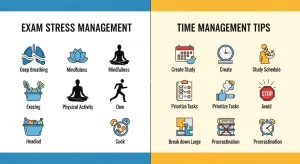The digital landscape of 2025 presents unprecedented challenges for cybersecurity and privacy protection. As artificial intelligence reshapes threat vectors and regulatory frameworks evolve rapidly, understanding modern cybersecurity practices has become essential for individuals and organizations alike. These trends are influenced by generative AI (GenAI) evolution, digital decentralizing, supply chain interdependencies, regulatory change, endemic talent shortages and a constantly evolving threat landscape.
The Ultimate Guide to Home Automation & Smart Home Devices 2025
The Current State of Cybersecurity and Privacy in 2026
Emerging Cyber Threats
The cybersecurity landscape has transformed dramatically, with shadow AI proving to be more common — and risky — than we thought. Organizations now face complex challenges managing multiple AI systems, often deployed without proper oversight. This creates new vulnerabilities that require sophisticated data privacy protection measures.
Key threat vectors in 2025 include:
- AI-powered cyberattacks using machine learning for social engineering
- Multi-cloud security gaps creating inconsistent protection
- Insider threats amplified by remote work environments
- Supply chain compromises targeting interconnected systems
- Advanced persistent threats leveraging zero-day exploits
Regulatory Evolution and Data Privacy Laws
According to a 2024 report by Statista, 82% of consumers in Europe said they are more likely to do business with companies that are transparent about their data practices. This consumer demand drives stringent privacy protection requirements worldwide.
The regulatory landscape continues expanding beyond GDPR, with almost half of all U.S. states enacting modern data privacy legislation by the end of 2024. Organizations must navigate increasingly complex compliance requirements while maintaining operational efficiency.
The Ultimate Guide to Consumer Electronics & Gadget Reviews
Essential Cybersecurity Practices for 2026
Multi-Factor Authentication and Password Security
Multi-Factor Authentication (MFA), such as Duo, will keep your data safe even if your password gets stolen. Strong authentication forms the foundation of modern cybersecurity strategies.
Best practices for password security:
- Use unique, complex passwords for every account
- Implement password managers to generate and store credentials securely
- Enable biometric authentication where available
- Regular password rotation for sensitive accounts
- Avoid password reuse across multiple platforms
Zero Trust Architecture Implementation
Zero trust architectures will be pivotal in shaping the future of cybersecurity. This approach assumes no inherent trust within network perimeters, requiring continuous verification of all users and devices.
Zero Trust principles include:
- Verify identity before granting access
- Apply least-privilege access controls
- Continuously monitor network activity
- Encrypt all data in transit and at rest
- Implement micro-segmentation strategies
The Complete Guide to Debt Management & Credit Repair
Privacy Protection Strategies for Personal Users
Browser Security and Online Privacy
Use privacy-focused browsers like Brave, Firefox, or DuckDuckGo Browser to minimize data collection and tracking. Your browser serves as the primary gateway for online privacy protection.
Privacy-enhancing browser practices:
- Configure privacy settings to block tracking cookies
- Use private browsing modes for sensitive activities
- Install ad blockers and privacy extensions
- Clear browsing data regularly
- Disable location sharing unless necessary
Secure Communication and Data Sharing
Using encrypted messaging apps can significantly enhance your online security and protect your personal information. Encrypted communication prevents unauthorized access to private conversations and sensitive data.
Secure communication tools:
- Signal for encrypted messaging
- ProtonMail for private email
- Tor browser for anonymous browsing
- VPN services for location masking
- Encrypted file sharing platforms
Side Hustles & Passive Income: Build Wealth
Advanced Cybersecurity Measures for Organizations
AI-Driven Threat Detection
AI-driven threat detection will be pivotal in shaping the future of organizational cybersecurity. Machine learning algorithms can identify anomalous behavior patterns and potential threats in real-time.
AI security implementation strategies:
- Deploy behavioral analytics to detect insider threats
- Implement automated incident response systems
- Use predictive threat intelligence platforms
- Monitor network traffic with AI-powered tools
- Analyze user activity for suspicious patterns
Cloud Security Best Practices
Multi-cloud setups require uniform control over patching, monitoring, and access. Organizations must address the complexity of securing diverse cloud environments while maintaining visibility across platforms.
Cloud security essentials:
| Security Measure | Implementation | Benefits |
|---|---|---|
| Identity Access Management | Centralized authentication | Consistent access control |
| Data Encryption | End-to-end protection | Confidentiality assurance |
| Security Monitoring | 24/7 threat detection | Rapid incident response |
| Compliance Management | Automated policy enforcement | Regulatory adherence |
| Backup and Recovery | Disaster preparedness | Business continuity |
Complete Guide to Investing & Retirement Planning
Building a Culture of Cybersecurity Awareness
Employee Training and Education
The persistent risk of social engineering and human error underscores the importance of ongoing employee training and robust cyber hygiene. Human factors remain the weakest link in cybersecurity chains, making education crucial for organizational protection.
Training program components:
- Phishing simulation exercises
- Security awareness workshops
- Incident reporting procedures
- Social engineering recognition
- Secure remote work practices
Regular Security Audits and Updates
Install security patches and software updates on your personal devices as soon as they become available. Consistent maintenance prevents exploitation of known vulnerabilities.
Audit checklist items:
- Vulnerability assessments
- Penetration testing
- Access privilege reviews
- Security policy updates
- Compliance verification
Essential Budgeting & Saving Strategies
Future Trends in Cybersecurity and Privacy
Quantum Computing Impact
The emergence of quantum computing presents both opportunities and challenges for cybersecurity. While quantum encryption offers unprecedented security, quantum computers threaten current cryptographic standards.
Privacy-Preserving Technologies
An increased focus on privacy and security by design and effective AI and data governance drives innovation in privacy-preserving technologies. These solutions enable data utilization while maintaining individual privacy rights.
FAQ Section
What are the most important cybersecurity practices for individuals in 2025?
The most crucial cybersecurity practices include enabling multi-factor authentication on all accounts, using strong and unique passwords with a password manager, keeping software updated with the latest security patches, and being cautious about sharing personal information online. Additionally, using privacy-focused browsers and VPN services enhances online privacy protection.
How do new privacy laws affect businesses in 2025?
New privacy protection regulations require businesses to implement transparent data collection practices, provide clear opt-out mechanisms, and demonstrate compliance with data minimization principles. Companies must update privacy policies, enhance data security measures, and prepare for increased regulatory enforcement to avoid significant penalties.
What role does artificial intelligence play in modern cybersecurity threats?
AI serves a dual role in cybersecurity—while it enhances threat detection capabilities and automated response systems, cybercriminals also leverage AI for sophisticated attacks. Shadow AI deployments within organizations create new vulnerabilities, while AI-powered social engineering attacks become more convincing and harder to detect, requiring advanced AI-driven defense mechanisms.
Take Action to Protect Your Digital Life Today
Don’t wait until it’s too late—start implementing these cybersecurity and privacy protection strategies immediately. Your digital security depends on proactive measures and continuous vigilance.











